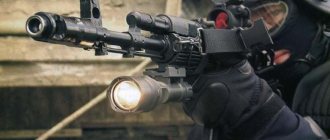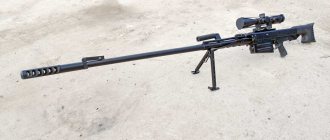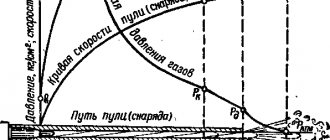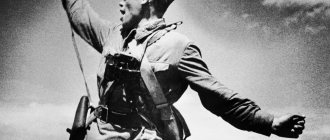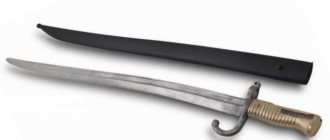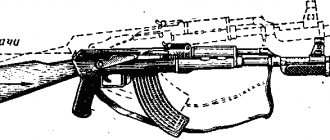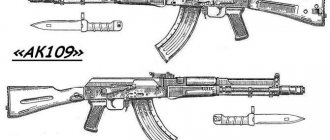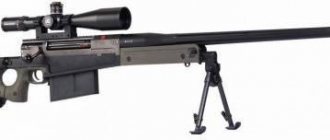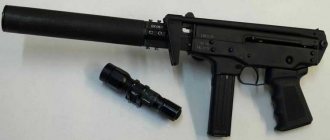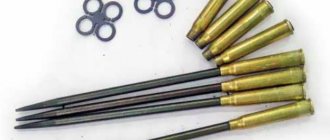There are a great many types of emergency situations when there is no fire, but the intervention of rescuers is necessary. And for them, their own type of automotive special response equipment has been developed. We are studying the meaning of the special ciphers of the Ministry of Emergency Situations on board such vehicles.
By analogy with the main fire trucks, which, let us recall, are divided into two large groups - the main general use and the main target use - ASA (emergency rescue) are also divided into general and target ones, says Onliner. Let's start with the general ones.
General purpose rescue equipment
The most common accidents are, naturally, car accidents. Unfortunately, the need to remove a victim from a broken car often arises. For this you need hydraulic shears, circular saws, jacks and a number of other special tools.
ASA type vehicles respond to such accidents . They are called general purpose rescue vehicles.
In the Republican Special Forces Detachment (ROSN) of the Ministry of Emergency Situations there is a structural unit whose job is to get through motorcycle traffic jams to accidents. Logically, rescue motorcycles should be given the abbreviation ASM (emergency rescue motorcycle), but such a designation was not introduced. The official name is a mobile emergency rescue unit based on Yamaha XT660R motorcycles.
Unfortunately, accidents sometimes occur not only in road transport, but also, for example, in railway transport. Then you need more tools, and it is more difficult to get to the place of the disaster itself. But even for such cases, ROSN has the corresponding ASA on the heavy MZKT-73011 chassis. Bodies with different sets of equipment can be changed, which is ensured by the multi-lift system.
There is purely rescue equipment, without the prefix “emergency”. It is used when there is no accident, but there are victims. It would be more correct to call it search and rescue.
When the first equipment for such tasks appeared at the Ministry of Emergency Situations, there were no special abbreviations for it yet, they simply left the factory designation. This is, for example, the Radian-1 all-terrain vehicle on ultra-low pressure tires. These are used to rescue fishermen from broken ice floes or search for those lost in swampy areas.
Search and rescue ATVs and snowmobiles also do not yet have a special abbreviation. This technique came into service just a couple of years ago.
ATVs and snowmobiles do not arrive at search sites under their own power. They are brought by GAZelles with trailers. In the bodies of the GAZelles there is a supply of accessories that are needed for the work of search engines in forests, etc. All together this is already a complex, and it has a special designation - APSR , a search and rescue vehicle.
What is AKS ? This is also in the area of searching for victims. Both lost in the forest and trapped under the rubble of buildings, etc. AKS is a vehicle of the canine service of the Ministry of Emergency Situations. The same cute rescue labradors that children love so much during the holidays ride in vans with this abbreviation.
What is the main difference between audio conferencing and video conferencing
Methods of transmitting information
During an audio conferencing session, users can communicate only in voice mode; all other methods of transmitting information, such as in video conferencing, are not available to them. They cannot see the other person, show each other presentations, or use other collaboration tools that require eye contact.
Cost of solutions
Audio conferencing systems are much cheaper than those designed for use in video conferencing. Video conferencing in its serious understanding requires much larger investments in equipment, because in this case, video broadcasting is added to the transmission of audio signals, which requires the use of more capacious communication channels, means of capturing and displaying video images for each subscriber. For audio conferencing, it is enough to have telecommunications equipment (regular telephone, IP telephone, conference telephone) and an IP telephony software application with which users can communicate with each other; often it is already implemented in the enterprise’s digital PBX.
Convenience
It is believed that video conferencing is a technology that can bring a virtual meeting as close as possible to a real one due to full audio-visual contact. In this case, understanding between the interlocutors reaches 90%. Communication in audio conferencing mode is equivalent to telephone communication, therefore the level of mutual understanding between interlocutors is much lower in percentage terms.
"Narrow specialists"
Target ASAs include emergency rescue vehicles of chemical and radiation services, as well as diving services. They already have their own specific designations.
ARZ - radiation protection vehicle. The equipment includes gamma spectrometers, dosimeters, and anti-radiation suits. The trailer contains a Brokk 40 robotic complex.
This is what a Brokk 40 remote controlled robot looks like. It can be sent to places where a person cannot go even in a protective suit.
AHRZ has a broader specialization. This is a chemical and radiation protection vehicle. That is, it is used not only for radiation accidents, but also for spills of aggressive liquids, for example.
AHRR is a chemical and radiation reconnaissance vehicle. There are only a few dosimeters here. Moreover, they have little in common with the household appliances we are used to. Professionals have equipment of a completely different level of accuracy and, accordingly, cost. There is also a so-called weather kit that allows you to analyze and predict the spread of radioactive substances. In addition, there was room inside for multi-channel gas analyzers and a whole range of purely professional equipment. This variant based on the Mercedes-Benz Sprinter 519 guards the Belarusian Nuclear Power Plant.
Heavy AHRZs are equipped with a very wide range of equipment. Special pumps and tanks for collecting aggressive liquids are added to special suits and instruments.
If the situation with a chemical or radiation accident is very serious, then ALHRA , a vehicle-laboratory for chemical and radiation analysis, will go ahead. This is already a mobile “research center” with super-complex (and super-expensive) special instruments. If ALHRA gives the go-ahead, then AHRZ will enter the battle.
ABCS is a diving and rescue service vehicle. Relatively simple diving ASAs carry a team of divers, special suits and scuba gear, and also tow a motor boat. The guys from the ABCC deal with many tasks on the water. Searching for and raising the bodies of those who drowned as a result of accidents is also their job.
But there are also completely special diving ASAs - the so-called mobile diving complexes ( MVC ). Their equipment list is truly impressive: underwater diamond hydraulic chain saws, underwater rock drills, jackhammers and much more.
The crew of such a machine can even penetrate the hull of a sunken ship. And the MVK is a mobile home with air conditioning and a bathroom.
If the Costa Concordia capsizes in the Minsk Sea or a sunken Spanish galleon with barrels of gold is discovered at the bottom of Naroch, then specialists from the MVK . And on a trailer they will bring with them an MB - a mobile pressure chamber.
AMC is a medical service vehicle. The Ministry of Emergency Situations has its own doctors. Their main task is to help injured rescuers, but they will, of course, come to the aid of the population.
Rescuers also have tasks when nothing has collapsed or burned yet, but there is already work for specialists. We are talking about duty inspections of various objects. For this purpose, there are many types of mobile laboratories. MDK , a mobile diagnostic complex, is just one of the options. This special vehicle is designed to assess the technical condition of buildings, structures and their suitability for further operation.
The equipment considered is designed to work in a wide variety of accidents. But not only accidents happen, but also something on a larger scale - natural or man-made disasters associated with an abundance of destruction over a large area. We're talking about hurricanes and floods. The Ministry of Emergency Situations is also ready for this and has an impressive arsenal of engineering equipment. We'll talk about it in the next episode.
Audio conferencing equipment
If a user wants to equip a meeting room to organize an audio conferencing session with a remote branch, he needs to pay attention to equipment such as discussion systems consisting of a central conference control unit and microphone consoles. This equipment is specially designed for organizing audio and video conversations in large conference rooms. You can also use echo-cancelling speakerphones for audio playback, which can be chained together to cover large areas.
If the user has to negotiate with foreign partners or clients, in order to avoid difficulties in communication, additional equipment can be used - simultaneous translation systems. This equipment can be either integrated with the conference system or stand-alone. In the first case, the distribution of translation is carried out by the central unit, in the second case, it is necessary to use special devices for this - infrared ports.
Kalashnikov assault rifle AK AKS AKM AKMS
Kalashnikov assault rifle AK AKS AKM AKMS
The first Soviet assault rifle chambered for the intermediate cartridge of the 1943 model (7.62?41) was the Sudaev AS-44 assault rifle, which underwent military tests in the spring-summer of 1945
experimental machine gun of the Tokarev system chambered for 7.62?41, 1945
first experimental Kalashnikov assault rifle chambered for 7.62?41, 1946, also known as AK-46
experimental Kalashnikov AK-46 assault rifle, incomplete disassembly
Experimental Bulkin AB-46 assault rifle, which had a significant influence on the design of the Kalashnikov AK-47 assault rifle
Experimental Bulkin AB-46 assault rifle, incomplete disassembly
first experimental Kalashnikov assault rifle of 1947, also known as AK-47
experimental Kalashnikov assault rifle 1947, incomplete disassembly
experimental Kalashnikov assault rifle 1947, second model
serial Kalashnikov AK assault rifle produced in 1949–51, with a stamped receiver
serial Kalashnikov AK assault rifle produced after 1951, with a milled receiver
serial Kalashnikov AK assault rifle produced after 1951, with a milled receiver
serial Kalashnikov AK assault rifle produced after 1951, in the version for Special Forces, equipped with a PBS-1 silencer
serial Kalashnikov assault rifle modernized AKM early release
serial Kalashnikov assault rifle modernized with a folding buttstock AKMS
serial Kalashnikov assault rifle, modernized AKMN (with a bracket for a night sight on the left side of the receiver) and with a muzzle compensator, which appeared on AKM assault rifles in the early 1960s
AKM with an underbarrel 40 mm grenade launcher GP-25
cross-sectional view of AKM
| Caliber: | 7.62?39 mm |
| Length: | 870 mm |
| Barrel length: | 415 mm |
| Weight with empty magazine: | AK: 4.3 kg; AKM: 3.14 kg |
| Magazine capacity: | 30 rounds |
| Rate of fire: | 600 rounds/min |
The history of the birth of the Kalashnikov assault rifle began at the end of 1942, when Soviet troops captured the first samples of German automatic carbines (machine guns) MKb.42(H) chambered for the intermediate cartridge 7.92?33 on the Volkhov Front. In the summer of 1943, at a meeting at the NGO based on the results of studying the captured MKb.42(H) machine gun and the American M1 carbine, it was decided that it was necessary to urgently develop its own set of weapons chambered for an intermediate cartridge, which would provide the infantry with the ability to effectively fire at ranges of about 400 meters (beyond capabilities of submachine guns). The development of the new complex began, of course, with the creation of a new cartridge, and already in November 1943, drawings and specifications of the new cartridge, developed by designers Semin and Elizarov, were sent to all organizations involved in the development of small arms. This cartridge had a bottle sleeve 41 mm long and was equipped with a pointed bullet with a caliber of 7.62 mm and a weight of 8 grams with a lead core. The development of weapons for the new cartridge began in several directions - an assault rifle, a self-loading carbine and a carbine with manual reloading. In mid-1944, the testing commission selected for further development an automatic rifle designed by Sudaev, which received the designation AS-44. Based on the results of its refinement, a decision was made to produce a small series and conduct military tests, which took place in the spring and summer of 1945 both in a group of Soviet troops in Germany and in a number of units on the territory of the USSR. The overall test experience was positive, but the troops expressed a firm demand to reduce the weight of the machine gun. As a result, it was decided to conduct another round of tests at the beginning of 1946.
This is where Sergeant Kalashnikov comes onto the scene. After being wounded in 1942, during his treatment he developed a submachine gun of an original design, and as a result was sent to continue his service at the Scientific Testing Ground for Small Arms and Mortars (NIPSMVO) in the town of Shchurovo, not far from Moscow. Here, in 1944, Kalashnikov developed a self-loading carbine, the design of which was clearly influenced by the American M1 Garand rifle, and with the announcement of a competition for an assault rifle, Kalashnikov became involved in it. In November 1946, Kalashnikov’s project, among some others, was approved for the production of prototypes, and Kalashnikov was sent to Kovrov, to plant No. 2 for the direct production of prototype assault rifles. The first Kalashnikov assault rifle, known as the AK-46, had an automatic mechanism with a short-stroke gas piston located above the barrel and a Garandovsky-type rotating bolt. The machine also had a split-receiver design, and a separate safety and fire mode selector on the left side of the weapon. In December 1946, the Kalashnikov AK-46 assault rifle entered testing, where its main competitors were the Tula AB-46 Bulkin assault rifles and the A.D. Dementyev assault rifle. Then followed the second round of testing, after which the AK-46 was declared unsuitable by the commission for further testing. Despite this decision, Kalashnikov (with the support of a number of members of the commission consisting of NIPSMVO officers with whom he served at the training ground since 1943) achieved a review of the decision and received approval for further development of his machine gun.
Returning to Kovrov, Kalashnikov decided to radically rework his design, in which he was actively assisted by the experienced designer of the Kovrov plant, Zaitsev. As a result, for the next round of tests, a new assault rifle was actually created, which had the most minimal similarity with the AK-46, but which received significant similarities with one of its main competitors - the Bulkin assault rifle (this includes the bolt frame with a rigidly attached gas piston, the layout of the receiver and its cover, placing the recoil spring on the guide and using the protrusion on the recoil spring guide to lock the receiver cover). In general, all the key design solutions of the new machine gun were borrowed from other systems - for example, the trigger mechanism was borrowed with minimal improvements from the Czech Holek self-loading rifle, the safety lever, which was also a dust-proof cover for the bolt handle window, was “seen” from the Remington self-loading rifle 8 Browning design, “hanging” the bolt group inside the receiver with minimal friction areas and large gaps - in the Sudaev assault rifle.
It should be especially noted here that during this period, copying and borrowing other people’s design solutions (including from direct competitors) was not only not prohibited, but was directly welcomed by both the testing commission and higher organizations. After all, all intellectual property (in today’s understanding) was then considered common in the USSR, that is, it belonged not to one inventor, but to the entire people (or state), and accordingly could be used for the benefit of the people and the state by anyone. It should also be noted that the use of the sum of already tested and successful solutions in itself does not guarantee the success of the resulting model - this requires significant engineering and design work, which was done by Kalashnikov and Zaitsev in the shortest possible time.
As a result, three assault rifles were released for the next round of testing, carried out in December 1946 - January 1947 - slightly improved samples of Dementiev and Bulkin and, in fact, a new assault rifle of Kalashnikov and Zaitsev.
According to the test results, not a single model fully satisfied the tactical and technical requirements - the Kalashnikov assault rifle, being the most reliable of all three, showed insufficient firing accuracy, and the only assault rifle that fully satisfied the requirements for accuracy - the TKB-415 of the Bulkin system, had problems with reliability and survivability of a number of parts. At a meeting of the testing commission based on the results of the next stage of the competition, it was ultimately decided to recommend the Kalashnikov assault rifle for military testing as the most reliable, and bringing it to the requirements of the TTT for accuracy of fire was postponed indefinitely. This decision can be considered justified from the point of view that in the situation that prevailed at that time, the Soviet army would have been much more useful in a reliable, but not very accurate machine gun in the near future than in a reliable and accurate machine gun unknown when.
It was decided to establish production of new assault rifles at a plant in Izhevsk, where Kalashnikov was sent from Kovrov at the end of 1947. The first batches of new assault rifles were assembled in Izhevsk in mid-1948, and at the end of 1949, based on the results of military tests, the new assault rifle was adopted by the Soviet Army in two versions under the designations “7.62 mm Kalashnikov assault rifle AK” and “7.62 mm Kalashnikov assault rifle with folding AKS butt" (for airborne troops).
Serial production of new assault rifles began in Izhevsk with great problems. The main problem was the receiver, which was assembled from a stamped steel body and a massive milled liner in the front using rivets. Imperfect technology led to distortions in the shape and size of the receiver and other problems, which, in turn, caused a large percentage of defects. After analyzing the problems, the plant designers made a seemingly paradoxical decision - the transition to the “outdated” technology of milling the receiver from a solid forging instead of stamping and riveting will be economically justified due to a sharp reduction in the number of defects and returns of machine guns from military acceptance. The new receiver was developed in the department of the chief designer of the Izhevsk plant, and since 1951, AK and AKS assault rifles began to be produced with a milled receiver. At the same time, during production, numerous improvements were made to the design and production technology of the machines.
The appearance in the first half of the fifties of the experimental Korobov assault rifle, which was superior to the AK in terms of accuracy of fire, as well as lighter and cheaper to produce, led to the appearance in 1955 of new TTTs for a lightweight assault rifle. Subsequently, these requirements were supplemented by requirements for the creation of a light machine gun that was maximally unified with a machine gun—a squad-level support weapon. Competitive testing of new systems took place in 1957–58 and included a fairly large range of samples from different design bureaus. For these tests, the Kalashnikov group presented an improved version of the AK with a new stamped receiver, as well as a light machine gun based on it. Based on the test results in 1959, the “7.62 mm modernized AKM Kalashnikov assault rifle” was adopted into service by the Soviet Army, as it demonstrated high reliability, acceptable characteristics in terms of accuracy and accuracy of fire, and was “familiar” to both industry and troops.
In 1974, the 5.45 mm rifle complex, consisting of an AK-74 assault rifle and an RPK-74 light machine gun, was adopted by the Soviet Army, and the production of AKM assault rifles in the USSR was curtailed. However, a significant number of 7.62 mm AKM assault rifles still remain in service with various branches of the Russian army - I myself, while serving in the Russian Air Defense Forces in 1997–1998, had to shoot from standard 7.62 mm assault rifles produced in the late 1960s and early 1970s. A considerable number of 7.62 mm machine guns are in service with the Ministry of Internal Affairs and the Russian police.
AKs and subsequently AKMs were widely supplied to countries and regimes friendly to the USSR, both in the form of finished weapons and in the form of production licenses along with all the necessary documentation and technical assistance. 7.62 mm assault rifles were produced in Albania, Bulgaria, Hungary, East Germany, Egypt, Iraq, China, Romania, North Korea, Finland, and were supplied to even more countries. As a matter of fact, such a widespread distribution of Kalashnikov assault rifles in the world (as a rule, the number of AK-type assault rifles produced worldwide is estimated at about 90 million units) is primarily determined by the policy of the USSR, which generously distributed assault rifles and its production technologies to everyone who declared their readiness to follow the socialist path. ways or at least fight against world imperialism and colonialism. As a result of such generosity in the past, Russia has now lost a significant part of the assault rifle market, since now only the lazy in the countries of the former socialist bloc do not produce one or another version of the Kalashnikov assault rifle. There is no need to talk about any violation of patent rights here, since even without taking into account the unoriginality of the design, its age exceeds all maximum periods of patent protection, and the patent for the “Kalashnikov assault rifle” received in 1997 (world patent WO9905467 dated February 4, 1999) is actually protects only individual solutions embodied in the AK-74M series assault rifles, but not the earlier AK and AKM.
Civilian semi-automatic versions of AKs are quite popular both in Russia (carbines and shotguns of the Saiga series) and abroad, especially in the USA (mainly due to the popularity of the Kalashnikov brand, unpretentiousness to cartridges and low price).
One of the myths associated with the AK is that Kalashnikov “copied” the AK from the German MP-43 assault rifle, also known as Stg.44, also indicating that according to some sources, Schmeisser worked in Izhevsk from 1947 to 1950. Indeed, at first glance, the external layout of the AK and MP-43 is similar, as is the concept of an automatic weapon chambered for an intermediate cartridge. The similar outlines of the barrel, front sight and gas tube are due to the use of a similar gas engine (invented long before Schmeisser and Kalashnikov). Disassembling an AK and an MP-43 is fundamentally different: on an AK, the receiver cover is removed, on an MP-43, the trigger box is folded down on a pin along with the fire control handle. The barrel locking device is also different (rotary bolt on the AK versus bolt misalignment on the MP-43) and trigger mechanisms. It is likely that Kalashnikov knew about the MP-43, but it is obvious that when creating his machine gun he was more guided by other known models and systems (see above). The main merit of Kalashnikov (or rather, of his entire team involved in the development and debugging of the machine gun) is precisely the optimal arrangement of already known and proven solutions into a single model that meets the requirements.
The advantages of the AK are known to everyone. This is high reliability even in the most severe operating conditions, low maintenance, ease of use and maintenance, low cost in mass production. Disadvantages, however. are also well known. This, first of all, is not the most successful ergonomics of the entire weapon - the safety switch, inconvenient to use, as well as the shape and size of the butt, especially cause a lot of well-deserved criticism. Rather rough sights with a short sighting line also do not contribute to shooting accuracy, especially with single shots. Moreover, all of these shortcomings could be easily eliminated, if not in the AKM, then certainly in the AK-74, but the conservatism of military officials and manufacturers, unfortunately, turned out to be impenetrable. In general, the AK can be described as an ideal weapon for the long-past Second (and never happened, thank God, the Third) World War, which is not surprising - it was created on the basis of the fresh and very harsh experience of this war. For modern conditions of waging local wars and conflicts, the entire AK/AKM/AK-74 family is partly outdated, but no serious replacement is yet in sight - the Nikonov AN-94 assault rifle will obviously not replace the AK-74 in the army. However, in defense of the AKM and AK-74, it should be said that in the existing Russian conscript-type army, the introduction of a potentially more effective machine gun is unlikely to have any significant effect, since to realize its potential it will be necessary to radically change (and most importantly, increase) the level of small arms training of soldiers.
Technical description of the AKM assault rifle
The Kalashnikov AKM assault rifle is an automatic weapon with a gas automatic engine, magazine feed and air-cooled barrel.
The basis of the automation is a gas engine with a long stroke of the gas piston. The leading element of the automation is a massive bolt frame, to which the gas piston rod is rigidly attached. The gas chamber is located above the barrel, the gas piston moves inside a removable gas tube with a barrel lining. The bolt frame moves inside the receiver along two side guides, and the design provides significant gaps between the moving parts of the automation and the stationary elements of the receiver, which ensures reliable operation even with severe internal contamination of the weapon. Another aspect that contributes to the reliable operation of automation in difficult conditions is the obviously excessive power of the gas engine under normal conditions. This allows you to abandon the gas regulator, and thereby simplify the design of the weapon and its operation. The price of this solution is increased recoil and vibration of the weapon when firing, which reduces the accuracy and accuracy of fire, and also reduces the service life of the receiver, the rear wall of which receives impacts from the massive bolt frame. The barrel bore is locked by a rotating bolt on two radial lugs that engage with the elements of the receiver liner. Rotation of the bolt is ensured by the interaction of the protrusion on its body with a shaped groove on the inner surface of the bolt frame. The return spring with the guide rod and its base are made as a single assembly. The base of the recoil spring rod also serves as a latch for the receiver cover. The cocking handle is integral with the bolt frame, located on the right side of the weapon and moves when firing.
The AKM receiver is stamped from a steel sheet, with a riveted milled insert in the front part. In early AK assault rifles, the receiver was a combination of stamped and milled elements, while in serial AKs it was entirely milled. At first glance, a milled receiver and a stamped one can be easily distinguished from each other by the shape of the recesses above the magazine well. On an AK with a milled box, these are fairly long milled rectangular recesses; on an AKM, these are small oval-shaped stampings.
The AKM trigger mechanism (trigger mechanism) is trigger-type and provides single and automatic fire. The selection of fire modes and activation of the fuse is carried out by a long stamped lever on the right side of the receiver. In the upper position - “Fuse” - it closes the slot in the receiver, protecting the mechanism from dirt and dust, blocks the rear movement of the bolt frame, and also locks the trigger. In the middle position, it blocks the sear of a single fire, providing automatic fire. In the lower position, the single-fire sear is released, providing single-shot fire. In the AKM USM, unlike the AK, an additional trigger retarder has been introduced, which, during automatic fire, delays the release of the trigger after the self-timer is triggered for several milliseconds. This allows the bolt carrier to stabilize in its forward position after it has come forward and possibly bounced back. This delay has virtually no effect on the rate of fire, but improves the stability of the weapon.
The muzzle of the weapon barrel has a thread on which a nozzle for firing blank cartridges was originally placed, and in its absence, a protective sleeve. On AKM assault rifles, since the early sixties, a compensator began to be installed on this thread, which reduces the toss and pull towards the barrel during automatic firing by using the pressure of the powder gases escaping from the barrel on the lower protrusion of the compensator. In addition, a special silencer (a device for silent and flameless shooting) PBS or PBS-1, used in special operations, can be installed on the same thread.
The machine guns are fed from box magazines with double-row cartridges. The standard magazine capacity is 30 rounds. Early magazines were stamped steel, with flat sides. Later, magazines stamped from steel with vertical curved stampings on the sides to increase rigidity, as well as aluminum lightweight magazines, appeared. Then plastic magazines of a characteristic dirty orange color appeared in the troops. If necessary, the AKM can use 40-round horns and 75-round discs from the RPK light machine gun.
On early machine guns, the fore-end, pistol grip and butt are wooden; the butt has a steel butt plate with a lid covering a compartment for accessories for cleaning and maintaining the weapon. On the AKM, the buttstock comb was raised up to reduce the weapon's toss when firing. On some machine guns, the pistol grip is made of plywood or plastic. AK and AKM are equipped with a bayonet in a sheath and a gun belt. Modifications of the AKS and AKMS assault rifles, specially developed for the Airborne Forces, had folding butts made of stamped steel profiles. Such butts were folded down and forward, under the receiver; accessories for such machine guns were carried separately.
The machine's sights consist of an adjustable (for zeroing) front sight in the front sight and an adjustable rear sight, marked at a range of up to 800 (AK) or 1000 (AKM) meters. The AKMN variant of the assault rifle had a special bar on the left side of the receiver for attaching the night sight bracket.
Photo AKS-74U
Similar
AK-47 assault rifle cartridge caliber 7.62 mm.
Device. Rate of fire AK-74 assault rifle cartridge 5.45 mm caliber. Device. Rate of fire
Dragunov SVD sniper rifle caliber 7.62 mm. Device
AKS-74U assault rifle cartridge caliber 5.45 mm. Device. Weight
Mauser K96 pistol cartridge caliber 7.63 and 9 mm. Device
Pistol Walter PP / PPK cartridge caliber 7.65 and 9 mm. Device
Pistol Yarygin PYa Grach cartridge caliber 9 mm. Device
DShK machine gun cartridge caliber 12.7 mm. Device. Rate of fire
Luger pistol R.08 Parabellum cartridge caliber 9 mm. Device
Pistol PM cartridge caliber 9 mm. Rate of fire. Dimensions. Bullet speed. Sighting range
Self-loading shotgun Saiga-12 cartridge, caliber. Device
Maxim machine gun cartridge caliber 7.62 mm. Device. Weight
PPSh-41 Shpagina submachine gun cartridge caliber 7.62 mm
APS Stechkin pistol cartridge caliber 9 mm. Device
Nagan system revolver cartridge caliber 7.62 mm. Device
Kalashnikov PK machine gun and PKM cartridge caliber 7.62 mm. Device
Simonov carbine SKS-45 cartridge caliber 7.62 mm. Device
Rifles and carbines Mauser 98 caliber 7.92 mm. Device
PPS-42 and PPS-43 Sudaev submachine gun cartridge caliber 7.62 mm
Pistol Walter P38 cartridge caliber 9 mm. Device
MP-40 German submachine gun cartridge caliber 9 mm. Device
VSS Vintorez sniper rifle caliber 9 mm. Device
Submachine gun PP-91 Kedr cartridge 9 mm caliber. Device
Light machine gun RPK-74 cartridge caliber 5.45 mm. Device
Pistol Glock 17 cartridge caliber 9 mm. Device
Makarych, Izh-79-9T, MR-79-9TM, MP-80-13T traumatic pistol
AK-12 assault rifle cartridge caliber 5.45 mm. Device. Weight
Mosin rifles and carbines Three-line caliber 7.62 mm
PMM Makarov pistol modernized 12 rounds. Device
Revolver Colt Single Action Army (SAA) Peacemaker. Device
Machine gun PKP Pecheneg cartridge caliber 7.62 mm. Device
Sniper rifle VSSK Exhaust caliber 12.7 mm. Device
Beretta pistol 92 cartridge caliber 9 mm. Device
TT - Tokarev pistol cartridge caliber 7.62 mm. Device
Submachine gun PP-19 Bison cartridge caliber 9 and 7.62 mm. Device
Sniper rifle SV-98 caliber 7.62 mm. Device
Vladimirov KPV machine gun cartridge caliber 14.5 mm. Device
ASH-12 assault rifle cartridge caliber 12.7 mm. Device. Rate of fire
PSM pistol cartridge caliber 5.45 mm. Device
Pistol Colt M1911A1 cartridge caliber 45. Device
Smith-Wesson revolver Russian cartridge, caliber 10.67 mm. Device
Degtyarev DP-27 light machine gun, 7.62 mm caliber cartridge. Device
Shotgun Mossberg 500 Cartridge. Dimensions. Rate of fire. Sighting range
Pistol USP Heckler und Koch cartridge, caliber. Device
Thompson submachine gun cartridge caliber 11.43 mm. Device
Hunting carbine OSK-88 (SVT-40) caliber 7.62 mm. Device
AS Val silent automatic cartridge caliber 9 mm. Device
Submachine gun PP-19-01 Vityaz cartridge 9 mm caliber. Device
Machine gun Kord cartridge caliber 12.7 mm. Device. Weight. Sighting range
Osa - traumatic pistol cartridge, caliber. Device
AK-9 assault rifle cartridge caliber 9 mm. Device. Rate of fire
Degtyarev RPD light machine gun, 7.62 mm caliber cartridge. Device
Automatic OTs-14 Groza cartridge caliber 9 mm and 7.62 mm. Device
Czech pistol CZ-75 (modifications). Device
Browning pistol 1903 cartridge caliber 9 mm. Device
Sniper rifle OSV-96 caliber 12.7 mm. Device
FN P90 submachine gun cartridge caliber 5.7 mm. Device
Submachine gun OTs-02 Cypress cartridge caliber 9 mm. Device
Sniper rifle ASVK Kord caliber 12.7 mm. Device
Automatic AEK-971 Cartridge. Caliber. Device. Rate of fire
Steyr AUG assault rifle (A1, A2, A3) cartridge caliber 5.56 mm
AK series 100 assault rifles. Modifications. Device. Weight. Dimensions
Uzi submachine gun. Cartridge. Caliber. Rate of fire
Pistol SR1M Gyurza cartridge caliber 9 mm. Device
Pistol GSh-18 cartridge caliber 9 mm. Device
SVDK sniper rifle caliber 9.3 mm. Device
Automatic SR-3M Whirlwind cartridge caliber 9 mm. Device
Machine gun NSV-12.7 Utes cartridge, cal. Device. Weight
Kalashnikov RPK light machine gun cartridge caliber 7.62 mm. Device
Sniper rifle VSK-94 caliber 9 mm. Device
Vostok-1 (Jorge-3M) 9mm caliber traumatic pistol. Device
Degtyarev PPD submachine gun cartridge caliber 7.62 mm
English sniper rifle L96A1 cartridge, caliber
M1 Garand rifle cartridge caliber 7.62 mm. Device
Desert Eagle pistol. Device
Smith-Wesson revolver (modifications). Device
Automatic rifle HK G36 (E, K, C, KE) cartridge caliber 5.56 mm
Pistol P-96 cartridge caliber 9 mm. Device. Rate of fire
Pistol GP35 Browning High Power cartridge, caliber. Device
Assault rifle FN SCAR (L, H) cartridge caliber 5.56 and 7.62 mm
Revolver Lefoshe M1856 cartridge caliber 11 mm. Device
Submachine gun PP-90 cartridge caliber 9 mm. Device
AN-94 Abakan automatic Nikonov cartridge caliber 5.45 mm. Device
Submachine gun PP-2000 cartridge caliber 9 mm. Device
Mauser pistol HSc cartridge caliber 7.65 and 9 mm. Device
M16 automatic rifle cartridge caliber 5.56 mm. Device
Fedorov assault rifle cartridge caliber 6.5 mm. Device. Rate of fire
Pistol Baltiets cartridge caliber 7.62 mm. Device
Strizh pistol cartridge caliber 9 mm. Device. Weight. Sighting range
Browning pistol 1910 cartridge caliber 7.65 and 9 mm
Silent pistol PSS Vul cartridge caliber 7.62 mm. Device
Pistol SIG-Sauer P226 cartridge caliber 9 mm. Device
Pistol OTs-27 Berdysh cartridge caliber 7.62 mm and 9 mm. Device
AK-107 assault rifle cartridge caliber 5.45 mm. Device. Rate of fire
OTs-44 sniper rifle, caliber 12.7 mm. Device
German machine gun MG3 cartridge caliber 7.62 mm. Device
Self-loading shotgun Browning Auto-5 cartridge, caliber. Device
Submachine gun AEK-919K Kashtan cartridge caliber 9 mm. Device
PB pistol silent cartridge 9 mm caliber. Device
Pistol OTs-33 Pernach cartridge caliber 9 mm. Device
Hunting carbine KO-98 cartridge caliber 7.92 mm. Device
TK (Korovin pistol) caliber 6.35 mm. Device. Weight. Dimensions
Underwater assault rifle APS cartridge caliber 5.66 mm. Device
Pistol OTs-21 Malysh cartridge caliber 9 mm. Device
American M60 machine gun, 7.62 mm caliber cartridge. Device
MTs-116M sniper rifle, caliber 7.62 mm. Device
Automatic 9A-91 cartridge caliber 9 mm. Device. Rate of fire
Submachine gun PP-93 cartridge caliber 9 mm. Device
VAG-73 - Gerasimenko pistol. Device. Weight. Dimensions
Cordon-5 is a traumatic pistol. Device. Weight. Dimensions
Goryunov SG-43 heavy machine gun cartridge caliber 7.62 mm. Device
Webley revolver cartridge, caliber. Device. Dimensions. Weight
Machine gun AEK-999 Badger cartridge caliber 7.62 mm. Device
RP-46 machine gun, 7.62 mm caliber cartridge. Device. Rate of fire
Sniper rifle VS-8 cartridge caliber 8.6 mm. Device
Slostin machine gun cartridge caliber 7.62 mm and 14.5 mm. Device
Assault rifle Tavor TAR-21 cartridge caliber 5.56 and 5.45 mm
Submachine gun SR-2 Veresk cartridge caliber 9 mm. Device
Lancaster pistol cartridge caliber 12.1 mm. Device. Rate of fire
Submachine gun PP-90M1 cartridge caliber 9 mm. Device
Underwater pistol SPP-1M. Device. Weight. Dimensions
Traumatic pistol MP-461 Guard. Device. Weight. Dimensions
Lebel rifles and carbines are cartridgeed in 8 mm caliber. Device
Automatic A-91 cartridge caliber 7.62 mm. Device. Rate of fire
M14 automatic rifle cartridge caliber 7.62 mm. Device
Revolver Smith & Wesson Model 10 Military & Police
Automatic rifle FN FAL cartridge caliber 7.62 mm. Device
Submachine gun STEN MK 2. Device. Weight. Dimensions
Traumatic pistol IZH-78-9T Chain mail cartridge caliber 9 mm
Leader-M traumatic pistol 11.43×32T. Device. Weight. Dimensions
Ingram M10 and M11 submachine gun. Device. Weight. Dimensions
Pistol Steyr M9-A1 cartridge caliber 9 mm. Device. Weight
Pistol OTs-23 Dart cartridge caliber 5.45 mm. Device
Berthier rifles and carbines caliber 8 mm. Device
Automatic shotgun USAS-12 cartridge caliber 18.5 mm
Sniper rifle VS-121 caliber 7.62 mm. Device
Traumatic pistol MP-353 cartridge, caliber 11.43 mm
Tiss machine gun cartridge caliber 9 mm. Device. Rate of fire
Traumatic pistol MP-355 cartridge caliber 9 mm. Device
Automatic double-medium ADS cartridge caliber 5.45 mm. Device. Rate of fire
Traumatic pistol MP-81 cartridge caliber 9 mm. Device
Pistols Zastava 70 and 70(k), cartridge caliber 7.65 or 9 mm. Yugoslavia
Sniper rifle GALATZ (Galil) cartridge caliber 7.62 mm
Pistol MP-444 Bagheera cartridge caliber 9 mm. Device
Revolver Colt New Army / Navy. Device. Bullet speed. Sighting range
Type 64 is a Japanese automatic rifle. Device
Comments
+1 DarkBiker 03/11/2017 10:44 For the driver Ksyukha is just the thing. Fenced AKMs in a car are not the best choice. And Ksyukha is an ideal option. Lightweight and compact.
Reply | Reply with quote | Quote
+1 Vadim 03/11/2017 10:46 I fought with this one... At first I didn’t want to take it - but then I really liked it, practical, comfortable, just right for tankers.
Reply | Reply with quote | Quote
+3 steel 03/11/2017 10:58 My uncle serves in the special forces and says that the potential of the AK chambered for 5.45 cartridge is both AKSU and AK effective at a distance of up to 400 meters. He also says that it makes no sense to shoot at the enemy at a distance of 300–400 meters, because they (the opponents) are either not clearly visible or will have minimal effect. According to him, combat operations with the main weapon like the AK take place at a distance of 20 to 50–80 meters.
Reply | Reply with quote | Quote
-1 shot 12/14/2018 16:13 If only the cartridges would have been more useful, it would have been better.
Reply | Reply with quote | Quote
Update list of comments
